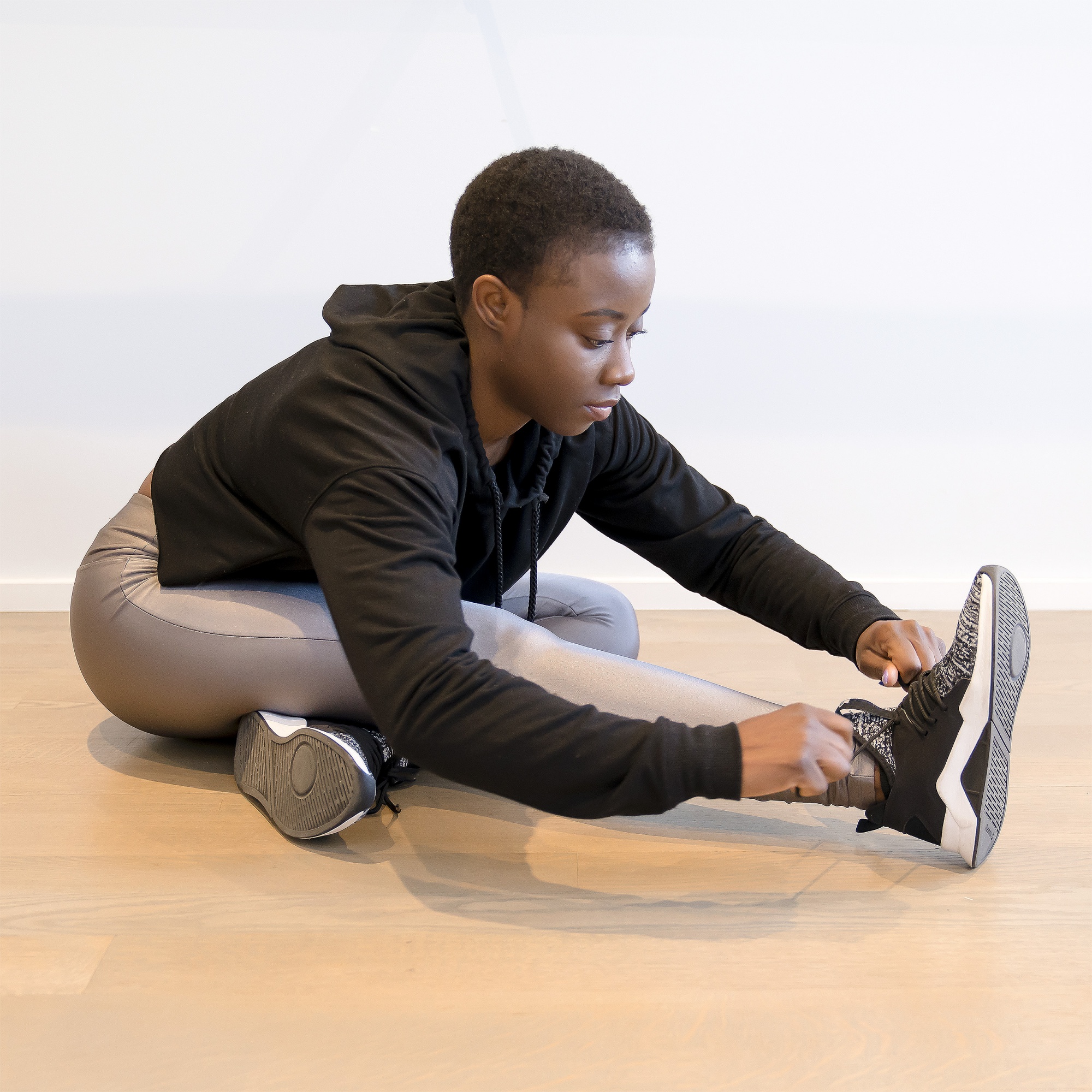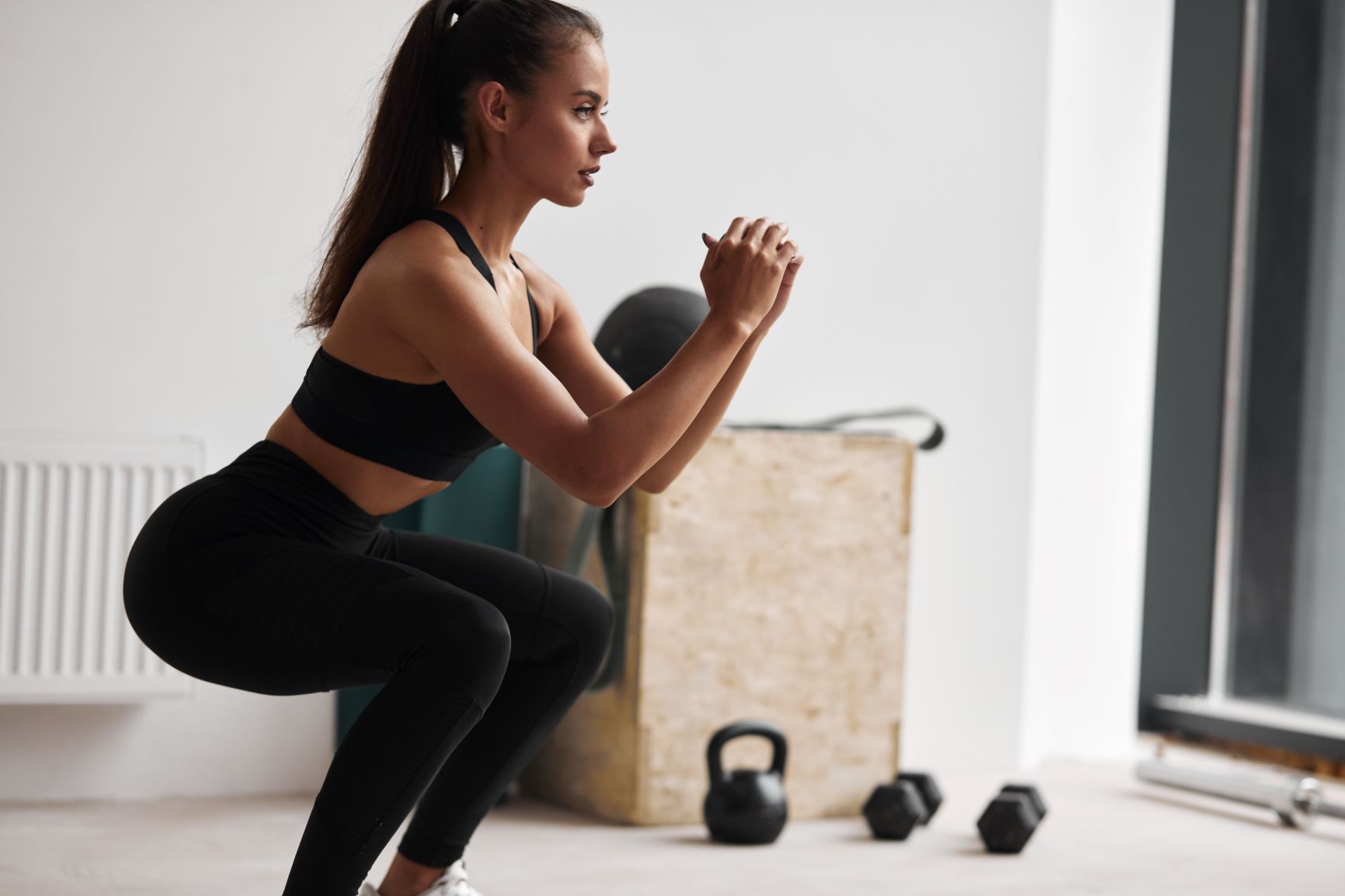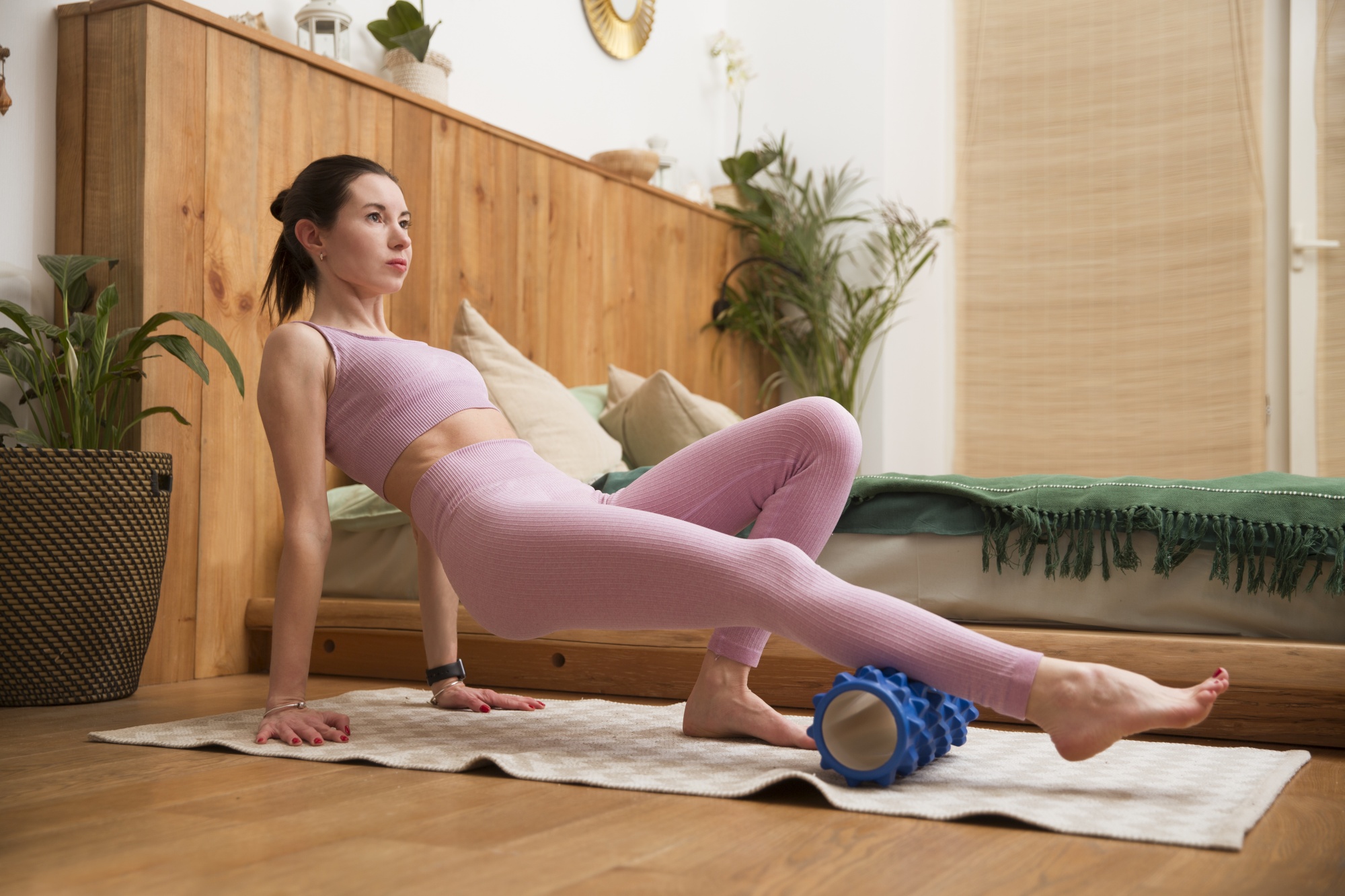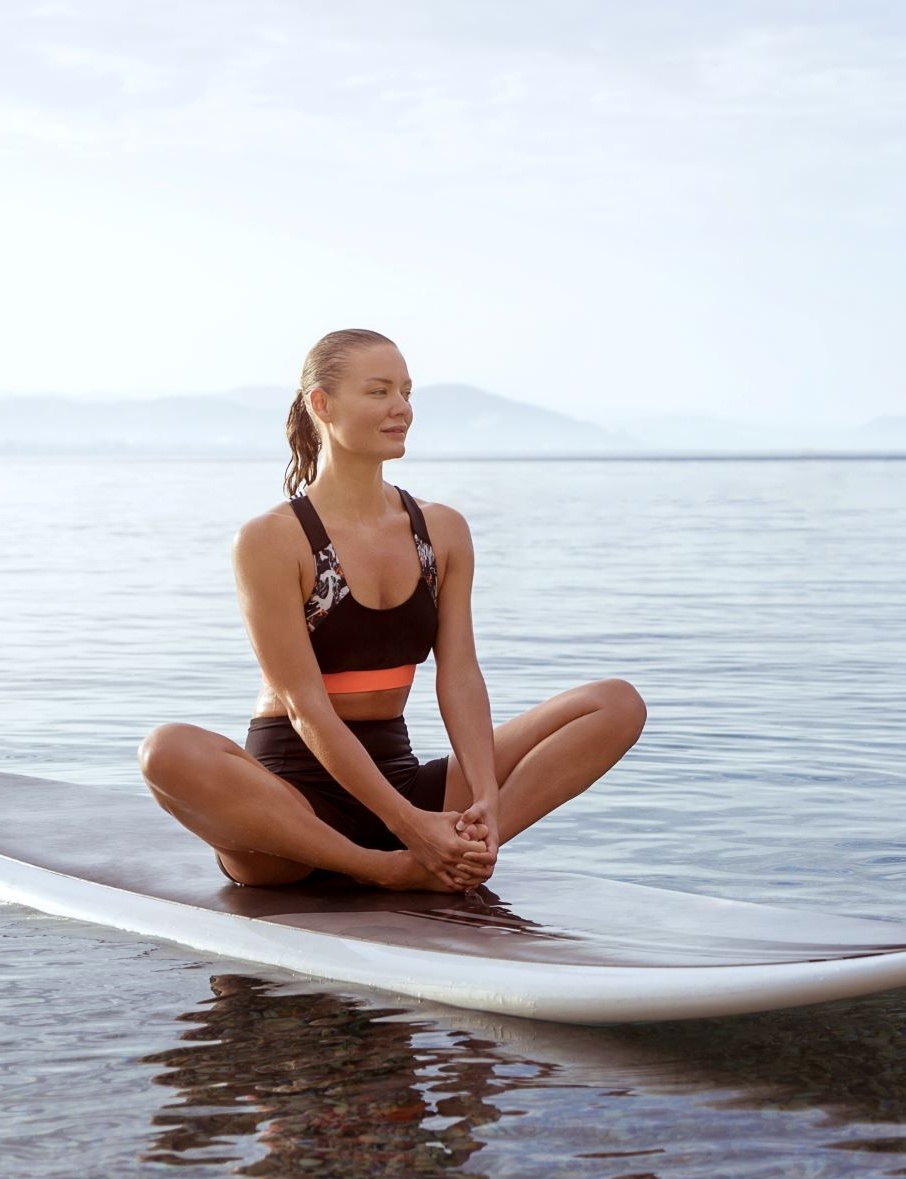Exercising as we age is important. It keeps us young, healthy, and feeling like ourselves. But we can’t hide from the idea that our bodies are not the same as they were 20 years ago. We need to be more aware of what we’re doing, so we can stay healthy and keep our active lifestyles (read how to uplevel your activewear style game here). Here’s how to avoid exercise injury over 40.

#1 | Start Slowly
If you haven’t been regularly exercising, you need to start slowly. As the Coastal Ortho Team explains, our bodies are less elastic as we age, and jumping right into intense workouts can be an injury waiting to happen. You can do any exercise you want (as long as you don’t have a contraindication), but you just need to take more time to get there. It’s like handling your money. When you’re in your 20s, the toll of being a Wall Street Trader is worth it. Now, you know you’re in it for the long-game and invest accordingly.
#2 | Warm Up
As we age, we lose more than just muscle elasticity. Our cartilage and joints are more brittle, and some muscles can be frayed. Plan for a good, long warmup. By allowing your body to adjust to exercise, you reduce the potential for injury. Warm ups are especially important if you work out early in the morning or in the cold. Your body just isn’t ready yet.
#3 | Add Balance
Incorporate balance exercises into your routine too. Falling injuries are more prevalent in older adults, according to The American Heart Association. And they stem from a lack of balance. Even if you’re not worried about falling – yet, it’s likely you’re not thinking about your balance as much as you should. Think about it; unless you practice yoga with built-in balance exercises, it’s not likely you balance much at all. Yet, if you ski, run, or play a sport, you know balance is important.

#4 | Increase Mobility
Right up there with balance is mobility. Work to make sure your muscles are going through their full ranges of motion – again, unless prior injury prevents it. This is particularly true for muscles and muscle groups that are injury-prone, like shoulders and knees. According to WellandGood.com, mobility “allows your body to move easily through life.”
#5 | Build Core Strength
Your core is involved in most of the exercises you do, so it’s important you keep it strong. It’s not about the visible abs (that’s fat loss!). When you have a weak core, you can strain to perform certain exercises and become injured- think: kettlebell swings or deadlifts, according to Prevention. You may love them. You may hate them. But planks and Supermans are great ways to make sure your core is tight. Be certain you’re performing them correctly. Double-check your planks here and your Supermans here.
#6 | Strength Train
I happen to really like lifting, so being told that it is good for me is great. If you are in the other camp, you still should consider adding strength training into your routine. Lifting is a great way to build muscle strength. As VeryWellFit explains, building your muscles keeps them from deteriorating, which keeps you from overusing other muscles to compensate. It can also help you correct any muscle imbalances that could lead to injury too.

#7 | Check Your Form
Yes, this! For any workouts you do, make sure you’re checking your form. Have a trainer double-check or ask your partner to take a picture, so you are certain. However it happens, you want to make sure you’re performing the exercises safely. This is especially key in moves like squats or dumbbell presses where positioning your body incorrectly can quickly lead to injury.
#8 | Stretch
The advice around stretching has been mixed lately. The current science is that it helps, but you should not over stretch. You want to do it when your body is neither totally cold (right before an early morning workout) or very hot (right after an intense workout). Instead, according to AARP, you should aim for another part of your day after some light movement. After you’ve walked the dog, tidied the house, or stood in the kitchen watching your partner make dinner, are perfect times. Make sure you’re not overstretching either. The idea isn’t to try and force your flexibility. Work to ease, open, and relax used muscles.
#9 | Do Isometrics
Isometrics are exercises that use muscles without creating tension on the joints. They are great exercises to incorporate into your routine because they can target so many of the other things you should be doing in one stretch. If you’re very active and workout regularly, isometrics are also great active recovery exercises. Check out this routine from Health.com.

#10 | Have Functional Fitness
Functional fitness could be called “being active in your everyday life” because that really is what it gives you. It’s about being able to maintain your body’s ability to do everyday things, according to Carespot.com. But you can take it further – it allows you to keep up with your kids or grandkids. It gives you the ability to do your own chores and household maintenance: think getting decorations out of the attic or gardening. Functional fitness keeps you ready to live your life without fear of hurting yourself or struggling to move.
#11 | Change It Up
Common injuries in people over 40 are often overuse injuries. Because of our aging bodies, the wear and tear on the same body part shows more quickly, according to the MayoClinic. Changing up your routine allows you to rest some muscles and joints and use others. Even if you’re using the same muscle groups – it’s hard to exercise without your glutes – you are using them differently. The effect is the same.
#12 | Foam Roll
A foam roller helps release the tension in the muscles and ligaments. Letting go of tension is always a good thing, but it can also help you avoid exercise injury over 40. According to Health.com, target your back, hip flexors, quads, and butt. If you have never done it before, it can be uncomfortable. It is more intense than a massage.

#13 | Pay Attention
Avoid exercise injury by paying attention to your body. Often we know we’re headed toward injury, but we get that last mile, last set, or even last rep in any way. And then it goes from uncomfortable to painful. Know yourself and stop the workout before you injure yourself.
#14 | Rest
Piggy-backing off of paying attention, you also need to rest. Gone may be the days when you can do HIIT workouts six days a week. To prevent injury, you will need to have more days off. And that’s ok. You can still attain your goals. You’ll just need to be strategic and give yourself more time. It’s not weak to rest. It’s wise.
#15 | Eat More Protein
I know you know your muscles are made of protein. But did you know that as we age we lose more of it? However, we also absorb more of it when we eat. (It’s like Mother Nature knew what she was doing!) Eating protein after your workout can help you recover more quickly, according to this article in RunnersWorld.com. It will help you prevent soreness and allow you to keep going with your workout schedule. For best results, pair your protein with some light carbs. It helps you absorb even more of it.
#16 | Omega 3s
Omega 3 fatty acids can help with the aches and pains that can partner with exercising as we age. The fatty acids help ease inflammation and can even enhance recovery (plus other health benefits), according to PeakEnduranceSport.com. You can increase your consumption of fatty fish or walnuts to get more Omega 3s. You can also take a high-quality supplement. Many supplements have come a long way and you no longer get the gross fish burp side effects.
Don’t let aging stop your exercise routine. Just take a few precautions to avoid exercise injury over 40, and you’ll be rockin’ your strong bod for years to come! How do you like to stay fit over 40? Let us know in the comments below.






COMMENTS